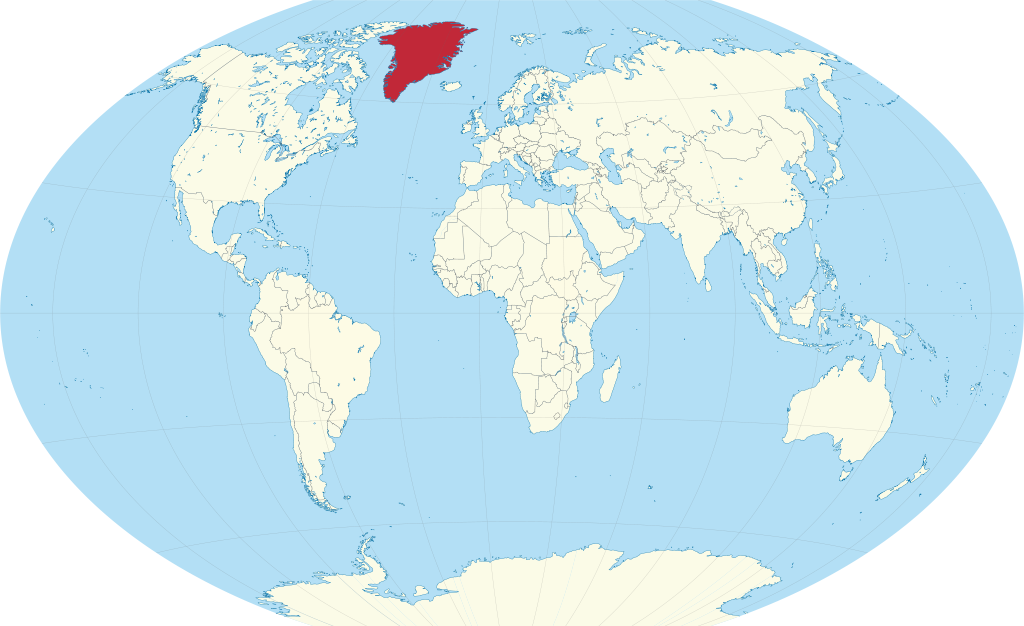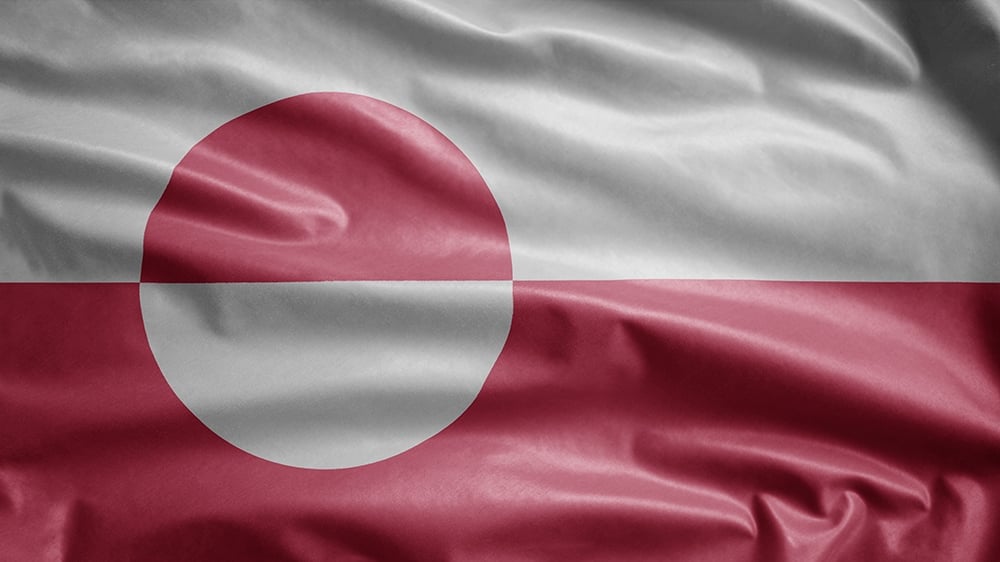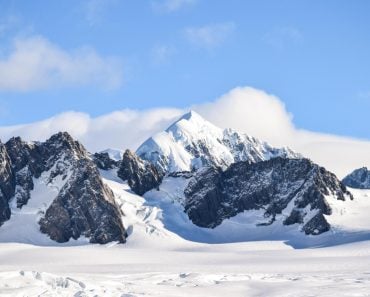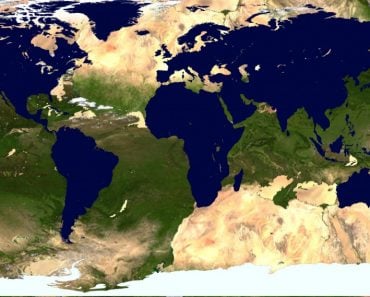Table of Contents (click to expand)
Greenland has a very unique geography, which makes it a point of attraction for other nations for various reasons, including strategic and economic interests,
Have you ever seen Greenland on a world map? It appears to be enormous, right? However, it is just the Mercator projection’s trick that causes it to appear stretched out and significantly larger than it is in reality. That being said, Greenland, the icy landmass floating between the Arctic and Atlantic Oceans, is actually quite large, but not as large as it appears on maps.
Greenland’s geography is fascinating and unusual, but did you know that Greenland’s distinctive terrain makes it strategically crucial for nations around the world? Let’s break down the reasons that make this icy island so important.

Greenland’s size is significantly exaggerated by the Mercator projection, making it appear larger than it is in comparison to other landmasses.
Recommended Video for you:
The Position Of Greenland And Geopolitics
Greenland is situated at the heart of the Arctic region on almost every map. Imagine Greenland as a central hub, akin to a watchtower, holding a strategic position between two significant continents, North America and Europe.
This geographical location provides a unique vantage point for watching both internal and exterior actions within the Arctic’s frozen borders. It enables Greenland to monitor operations in the Arctic region as a whole. Satellites may provide remote observational data, but the unique position of Greenland gives better insight to the Arctic circle.
As a result, Greenland’s location has far-reaching implications for global politics, military strategy, and economic interests.
Furthermore, the island’s strategic significance extends beyond trade and economy. Because of its geographical location, governments can monitor the activities of neighboring countries and international entities in the region. This monitoring capability is critical for understanding military asset mobility, natural resource development, and scientific research. As a result, states with Arctic interests work hard to establish partnerships and diplomatic relations with Greenland in order to gain a foothold in the region, thus allowing them to safeguard their strategic interests.
Greenland also serves as a major crossroads for nautical operations and commercial routes, as it is a gateway between the vast Atlantic and Arctic Oceans. Consider it as a bustling marketplace where ships from all over the world exchange a diverse assortment of products and commodities.

Greenland’s Melting Ice Is Opening Up New Possibilities
As global temperatures rise, Greenland’s ice is melting at an alarming rate. This melting ice serves as a stark reminder of how serious climate change truly is. According to scientific data, the southeast and northwest parts of the Greenland Ice Sheet is losing over 280 billion metric tons of ice per year, significantly contributing to rising sea levels and impacting weather patterns around the world.
However, this melting ice also opens up new commercial avenues and resource exploitation potential.
As Arctic ice melts, previously (almost) impassable routes become more accessible. Commercial shipping companies see this as a chance to build shorter shipping routes between Europe, Asia, and North America. The once-impassable Northwest Passage, for example, is progressively opening up, providing a tempting shortcut for marine traffic.
Also, beneath the icy surface of Greenland sits a treasure trove of precious resources. Oil and gas reserves, as well as rare earth minerals utilized in modern technologies, are lying dormant there. The melting ice makes it easier to access these precious resources, and governments seeking economic growth and energy security are eager to capitalize on this opportunity.

Scientific Exploration
Greenland’s geography offers an intriguing landscape for scientific investigation. Almost 80% of the island is covered by a huge ice sheet, which serves as a massive record keeper of Earth’s former climates. Scientists travel to Greenland to examine the huge glaciers, which act as frozen time capsules containing vital data on past environmental alterations.
To learn about the past, experts, particularly geologists, carefully retrieve ice cores from glaciers. These ice cores include vital information regarding temperature swings, previous volcanic eruptions, and greenhouse gas levels dating back thousands of years. Scientists obtain important insights into our planet’s historical temperature shifts by researching these ice cores, revealing information on the delicate balance between Earth’s climate systems.
Greenland’s frozen terrain is a rich trove of data in our perennial quest to understand Earth’s climate history. Each ice core segment, like peeking into the layers of an ancient book, offers a glimpse into the past, narrating stories of atmospheric conditions, natural disasters, and long-lost climatic events.
The data recovered from Greenland’s glaciers allows scientists to better understand the complexities of our planet’s historical climatic shifts, allowing them to better project and plan for the future. As humanity grapples with the issues of climate change, the importance of scientific study in Greenland cannot be emphasized.
Conclusion
The unique geography of Greenland is of crucial strategic importance to nations across the world. It is a sought-after area for economic, geopolitical, and security purposes due to its vast landmass, abundant natural resources, and strategic location in the Arctic region. As climate change continues to impact the Arctic, melting ice opens up new opportunities for resource extraction, transit routes, and scientific research, further adding to Greenland’s allure.
As a result, governments around the world are closely monitoring and engaging with Greenland in order to secure access to its resources and ensure regional stability. Understanding and navigating Greenland’s strategic relevance will be important in shaping global connections and collaboration in the 21st century.
References (click to expand)
- Hall D. R. (2021). Tourism, Climate Change and the Geopolitics of Arctic Development: The Critical Case of Greenland. CABI
- Goode, J. P. (1925, September). The Homolosine Projection: A New Device For Portraying The Earth'S Surface Entire. Annals of the Association of American Geographers. Informa UK Limited.
- Masson-Delmotte, V., Swingedouw, D., Landais, A., Seidenkrantz, M.-S., Gauthier, E., Bichet, V., … Vinther, B. (2012, August 10). Greenland climate change: from the past to the future. Wiley Interdisciplinary Reviews: Climate Change. Wiley.
- Materialising Greenland within a critical Arctic geopolitics - www.taylorfrancis.com
- Glikson, A. Y. (2019, May 31). North Atlantic and sub-Antarctic Ocean temperatures: possible onset of a transient stadial cooling stage. Climatic Change. Springer Science and Business Media LLC.












